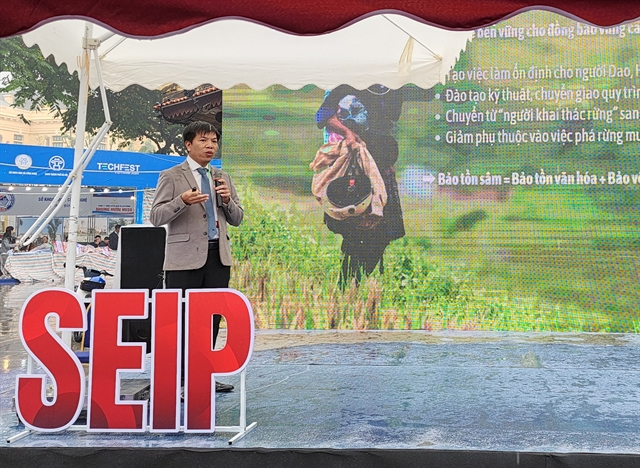 Life & Style
Life & Style

Huế Monuments Conservation Centre yesterday erected a nêu pole in the former Imperial Citadel following a re-enactment of a ceremony conducted by high-ranking mandarins under the Nguyễn dynasty (1802-1945).
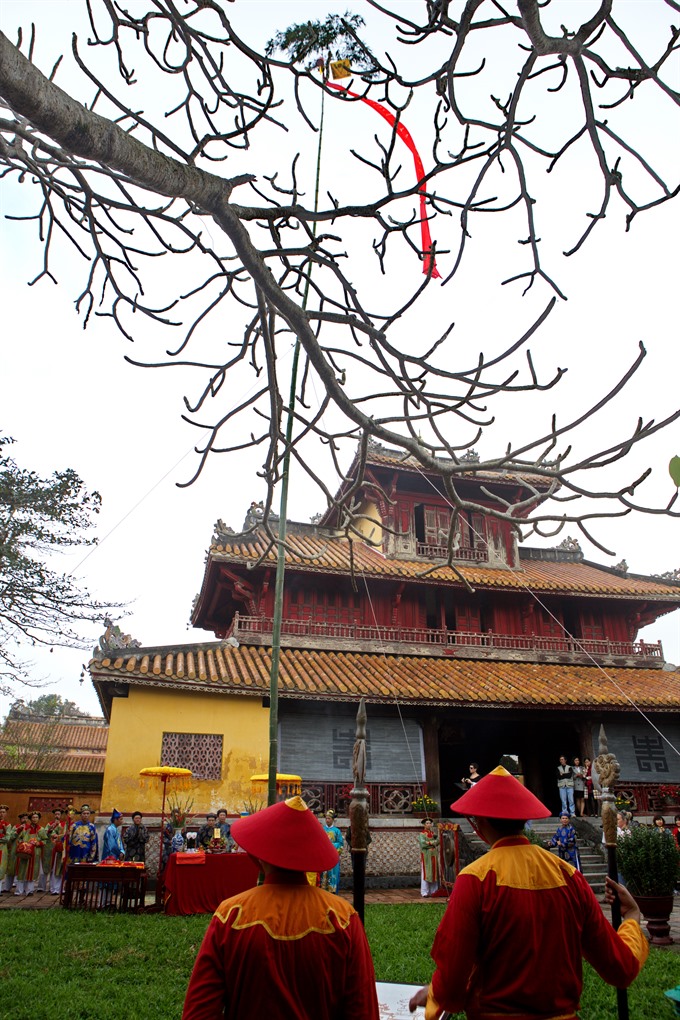 |
| Red dawn: The garment blows in the wind after being erected. |
by Phước Bửu
THỪA THIÊN- HUẾ — Huế Monuments Conservation Centre yesterday erected a nêu pole in the former Imperial Citadel following a re-enactment of a ceremony conducted by high-ranking mandarins under the Nguyễn dynasty (1802-1945).
To mark the upcoming Lunar New Year, the dynasty’s emperors erected a bamboo pole with a long stretch of red garment inside the citadel. This was part of a Vietnamese tradition, which said the nêu pole helped scare evil away from residential areas and allowed for a peaceful holiday.
People also believed that the red carpet would help the souls of their ancestors find the way home to celebrate Tết with them. Traditionally, Vietnamese people believe that their ancestors return home during the year’s most important holiday, so they also have a ceremony with food and offerings to invite the souls home.
Many communities around the country maintained the tradition of erecting a nêu pole in front of communal houses or pagodas. Some families erected smaller poles for their own homes.
The pole erecting ceremony inside the citadel was special and more holy compared to those held at community level. The bamboo poles were bigger while food and offerings were more expensive.
The royal ceremony was also accompanied by a band of royal musicians. — VNS
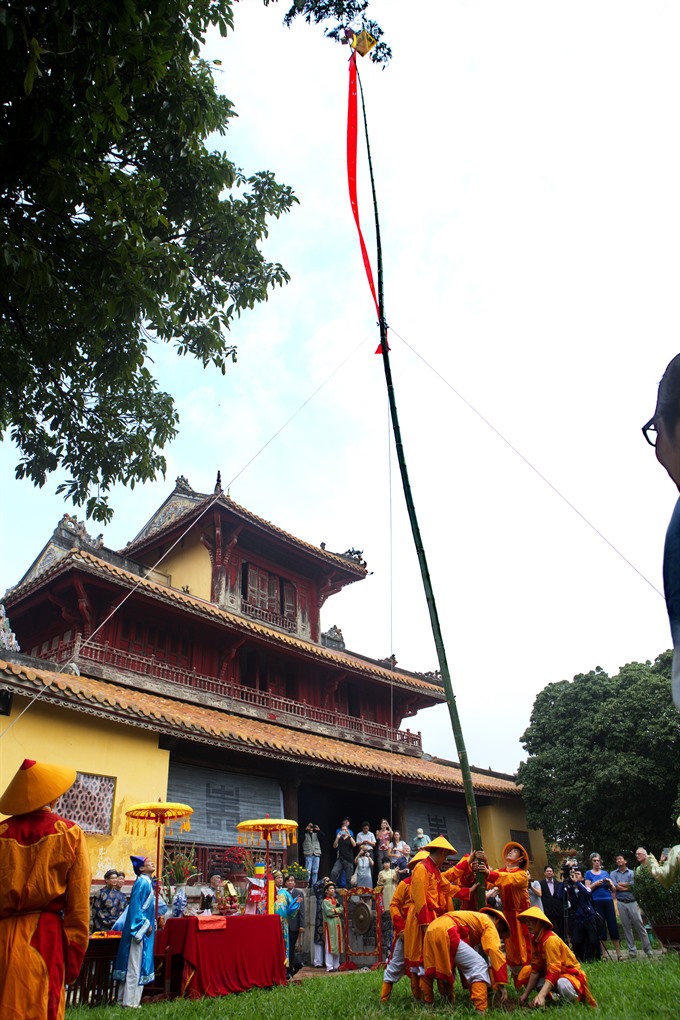 |
| By a thread: Strings are used to keep the pole in place. |
 |
| Wisdom: A mandarin instructs the ceremony process. |
 |
| Honor: An altar for rituals before erecting the pole. |
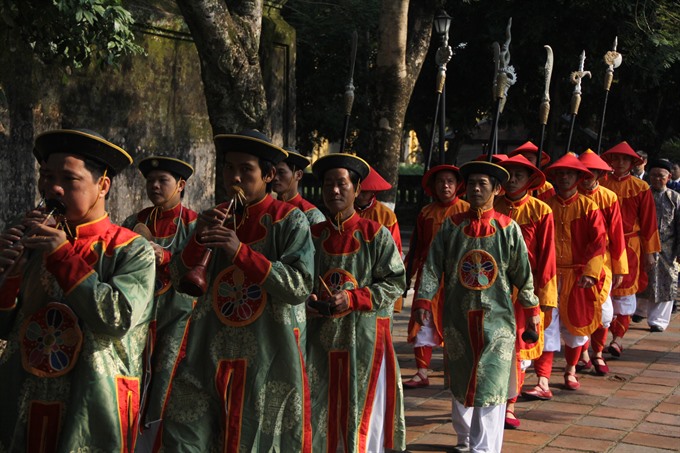 |
| Freedom song: A band plays royal court music to accompany the soldiers. |
 |
| Stronger together: Carrying the long pole requires many soldiers. |
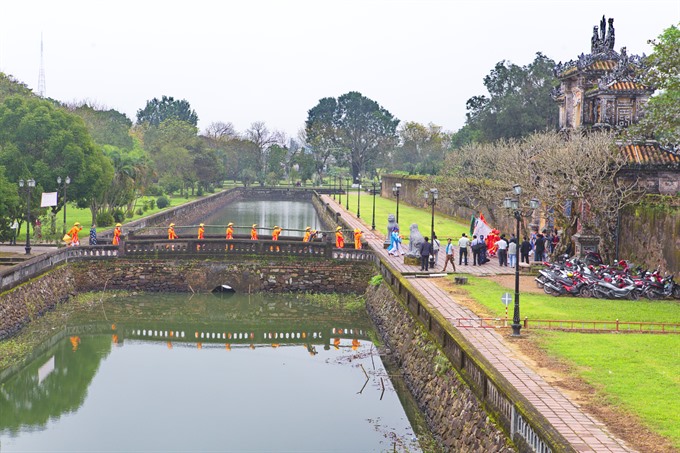 |
| Costumed crusaders: People dressed as soldiers carry the pole inside the citadel. — VNS Photos Nguyễn Văn Sum |

